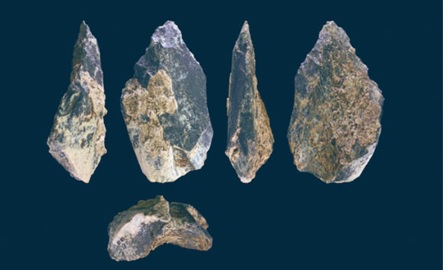A 1.4 Million Year Old Handaxe Unearthed In Ethiopia (July 15, 2020)
Paleoanthropologists working at the Konso research area in Ethiopia have found a 1.4 Million year old large bone fragment shaped into handaxe-like form.
The newly-discovered handaxe is a bifacial flaked fragment of a hippopotamus femur (thigh bone).
The superbly-preserved tool, which measures 12.8 by 7.5 by 4.6 cm, was found in the Konso Formation in southern Ethiopia.
The ancient artifact was analyzed by University of Tokyo paleoanthropologist Gen Suwa and his colleagues from Japan, Ethiopia and Hong Kong.
The researchers found that the handaxe bears at least 44 secondary flake scars range in size from 3 cm to less than 1 cm.
“Both the distribution pattern of flake scars and the high frequency of cone fractures are strong indicators of deliberate flaking,” the researchers said.
The bone tool is the oldest known extensively flaked example from the Early Pleistocene period.
It is also only the second bone tool recognized as a handaxe from the early Acheulean, a type of stone tool industry characterized by large bifaces.
A 1.4-million-year-old bone handaxe from Konso, Ethiopia, shows advanced tool technology in the early Acheulean.




Leave a Reply
Want to join the discussion?Feel free to contribute!